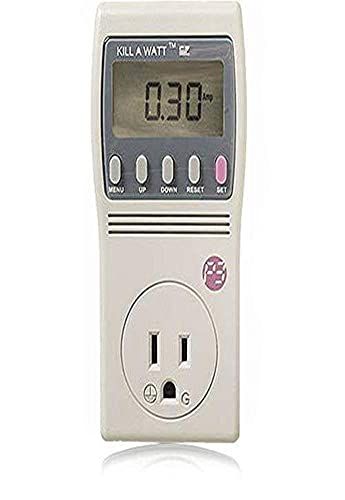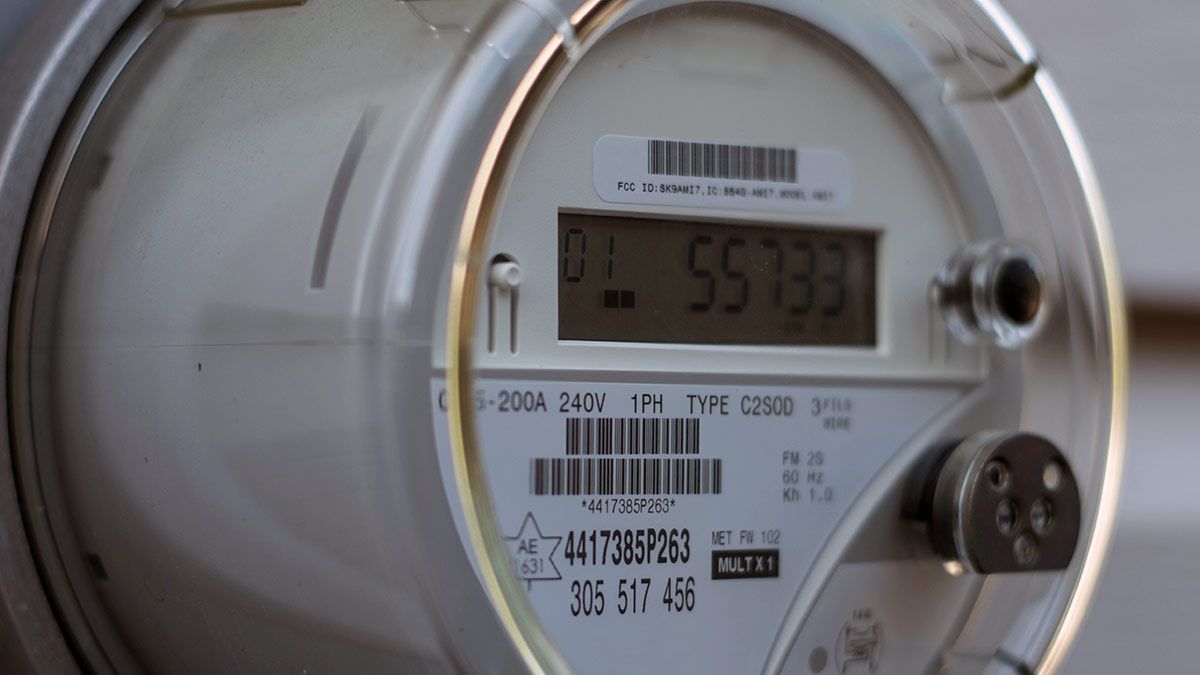Who wants to pay more on their electric bill if they don't have to? Here's how to identify and measure phantom loads to save money.
What Is a Phantom Load?
"Phantom load" is a phrase commonly used to refer to the standby power consumed by appliances and devices when they are not in active use.
If you're listening to music through your home stereo setup and the consumption is 80 watts, that is the active load. When the stereo is off, and it's still consuming 5 watts of power, that's the phantom load.
Not all phantom loads are inherently bad, however, even if your initial reaction is to assume that any power used when you're not actively using a device or appliance is wasted power. There are advantages and disadvantages to a device's phantom load, with almost all of the advantages centered on our comfort---such as ensuring devices turn on quickly or preserve their settings.
But, eliminating phantom loads around your home when those phantom loads don't benefit you or make your life more comfortable is a noble effort that is good for the environment and will save you money.
How much money will you save? While that's highly dependent on the makeup of your household and how many devices you have, the average household could easily save hundreds of dollars a year in electrical costs per year by aggressively eliminating phantom loads.
But don't worry; we won't leave you hanging with a vague estimate. In a moment, we'll show you how to measure the loads yourself and calculate how much they are costing you.
How to Identify Phantom Loads
So how do you identify which devices have a phantom load and which do not? While the only way to be certain is to actually measure the electrical consumption of the device, there are some tell-tale signs.
Here are some basic questions you can ask about a given device. If the answer to any question is yes, the device has a phantom power load.
- Is the device or the device's "wall wart" charging brick warm to the touch when the device is turned off?
- Does it have a remote control, or can it be turned on remotely via the local network or other means?
- Does it have lights, displays, or other indicators that stay on when the device is turned off?
- Is the device programmable and/or retains settings, without the aid of a battery, between uses?
- Does the device have a timer function to automate some process (making coffee, turning on lamps, etc.)?
In short, if a device turns on instantly (especially by remote control) or otherwise seems ready to go as if it was partially powered on and waiting, it's a good indicator it was, indeed, partially powered on.
How to Measure Phantom Loads
Let's look at how to measure a phantom load at an individual device level and then how to, for the curious folks out there, check the phantom draw of your entire home.
How to Measure the Phantom Load of Individual Devices
While putting your hand on a power brick and feeling the warmth will tell you that the device is using some power, it won't tell you how much. To find out how much, you need a measuring device.
Our preferred device, and one we have recommended for years now, is the P3 International P4460 Kill a Watt electricity monitor. Not only can you plug a device into it and see exactly how many watts of power the device is pulling down, but you can program the Kill a Watt with your local electric price-per-kWh and get an on-device estimate for how much a given device costs you to run per day, week, month and year.

P3 International P4460 Kill a Watt Meter
If you're at all curious about the power usage of devices around your home, you need this device.
The Kill a Watt is accurate to within 0.2% wattage and can measure down to 0.1W. Although it is worth noting that below 1W, especially below 0.5W, basic commercial watt meters, the Kill a Watt included, are less accurate.
At extremely low standby power levels, you need more sophisticated laboratory equipment to measure the power with extreme accuracy. For our purposes, however, the Kill a Watt is useful and a great value. It's more important to figure out whether a device has a phantom load of 20W than it is to figure out if the phantom load is truly 0.6W or 0.4W.
We have a detailed guide to using the Kill A Watt meter to measure your home's energy use if you'd like to read more about it, but to use it to measure the standby power of a single device it's quite straightforward. Just plug it in and read the output on the display.
You might be shocked at the results, by the way. While many devices, such as a cellphone charger, will have a phantom load so small as to be immeasurable by the Kill a Watt, other things use more power than you'd expect.
I tested several Samsung smart TVs around my home, for example, and the idle phantom load ranged from 14-18W depending on the size of the TV. With a power cost of 12 cents per kWh, leaving the TVs plugged in and idle for a year costs around $17 per TV.
How to Measure the Net Phantom Load of Your Home
Measuring the individual loads of devices to determine if, on a case-by-case basis, it's worth keeping the devices plugged in all the time is one thing. But what if you're curious about the overall phantom load of your home?
That's kind of a novel thing to be curious about. Your home has a "standby" mode when you're not living it up enjoying all the creature comforts, so what is it? Here's how you can get a rough idea of how much energy your home consumes in different states.
To do so, you'll need access to the power meter for your home so you can read the data presented on it. You'll also need a stopwatch and a calculator. We outline the method and the equation required in the section of this article entitled "Using Your Electrical Meter to Measure Electrical Usage," so review that section before continuing as we won't be rehashing the entire process here. Instead, we'll focus on tips to help you get a real sense of what the net phantom load of your home is.
First, let's establish a baseline to have a reference point and a basis for judging any changes. Don't change anything in your home, like unplugging devices. Go outside to the meter and measure the energy usage with the technique outlined in the article above. Let's say, for the sake of example, that you calculate your hourly power consumption is 1,400W---which is pretty close to the national average.
After establishing the baseline, go inside your home and turn off or unplug any appliances or devices that are necessary to the function of your home and/or cannot be unplugged.
For example, you would never turn off your furnace to save on standby power, nor would you unplug your refrigerator. Efficient or not, those things need to stay on for your safety and well-being. By briefly turning them off, however, we can remove whatever standby power they might consume from our home evaluation and focus on everything else that remains plugged in, like the TVs, computers, smart speakers, etc.
With those items unplugged and the remaining devices in the home plugged in but turned off, go back outside and check your meter again. For the sake of example, let's say that the readout and your calculations indicate your home is using 900W of power. That's the collective idle power draw of everything (save for the fridge and such you just unplugged) in your home. Every TV, every power strip, every phone charger, even the tiniest phantom load, if present, from every circuit board on every LED bulb.
If you're even more curious, you can go back and unplug more things. Unplug the TV in the guest room. Unplug your old game console you hardly ever play. Unplug anything that you don't want instant hassle-free access to---if you're willing to be hassled a little now and then to plug it in to save money, unplug it now.
Do a final reading of the power meter. Let's say the reading is now 600W. The difference between the idle-but-plugged-in reading, 900W, and the idle-but-unplugged reading, 600W, is 300W.
At 12 cents per kWh, a 300W standby load, over the course of an entire year, costs you $315.36. That's not exactly an insignificant amount of money and one that might have you seriously considering unplugging everything when you're not using it.


